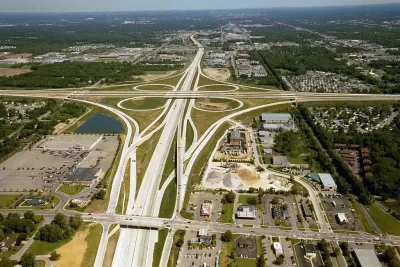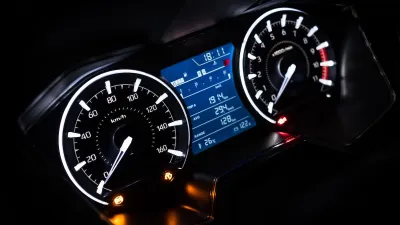The gas tax, suburban highway spending cycle is both self-serving and self-destructive, according to this article.

"Higher gas taxes are (likely) coming across the Midwest, framed by Ohio, Michigan and Wisconsin Democrats and Republicans alike as an offensive against potholes — but in reality a boondoggle that will soak taxpayers and create more of the car dependence that has devastated Midwestern cities like Detroit, Cleveland and Milwaukee," according to an article by Angie Schmitt.
The article breaks down the problem with the new gas tax in each of these states, starting with Michigan. Michigan's proposed gas tax increase of 45 cents would raise up to $2.5 billion a year. While the gas tax has been promoted by a campaign website titled "Fix the Damn Roads," the Michigan Department of Transportation doesn't want to stop with fixing old roads. They want to build new roads.
The state is planning two highway projects for the Detroit region alone totaling $4 billion. According to official population estimates, Southeast Michigan’s population grew only about 1 percent between 2010 and 2018. The growth that did occur was concentrated in the suburbs that these highways are designed to serve. During the same period, Wayne County — where Detroit is located, lost 3.8 percent of its population. Meanwhile, suburban Oakland County grew 4.5 percent.
The stories from Ohio are similar, and Schmitt connects the dots to make the point that highway expansions tend to benefit sprawl while perpetuating the inequities and lack of financial resilience that plagues many of the urban areas in these states.
FULL STORY: Midwest Will Raise Gas Taxes — And Make Everything Worse

Study: Maui’s Plan to Convert Vacation Rentals to Long-Term Housing Could Cause Nearly $1 Billion Economic Loss
The plan would reduce visitor accommodation by 25,% resulting in 1,900 jobs lost.

North Texas Transit Leaders Tout Benefits of TOD for Growing Region
At a summit focused on transit-oriented development, policymakers discussed how North Texas’ expanded light rail system can serve as a tool for economic growth.

Why Should We Subsidize Public Transportation?
Many public transit agencies face financial stress due to rising costs, declining fare revenue, and declining subsidies. Transit advocates must provide a strong business case for increasing public transit funding.

How to Make US Trains Faster
Changes to boarding platforms and a switch to electric trains could improve U.S. passenger rail service without the added cost of high-speed rail.

Columbia’s Revitalized ‘Loop’ Is a Hub for Local Entrepreneurs
A focus on small businesses is helping a commercial corridor in Columbia, Missouri thrive.

Invasive Insect Threatens Minnesota’s Ash Forests
The Emerald Ash Borer is a rapidly spreading invasive pest threatening Minnesota’s ash trees, and homeowners are encouraged to plant diverse replacement species, avoid moving ash firewood, and monitor for signs of infestation.
Urban Design for Planners 1: Software Tools
This six-course series explores essential urban design concepts using open source software and equips planners with the tools they need to participate fully in the urban design process.
Planning for Universal Design
Learn the tools for implementing Universal Design in planning regulations.
Ascent Environmental
Borough of Carlisle
Institute for Housing and Urban Development Studies (IHS)
City of Grandview
Harvard GSD Executive Education
Toledo-Lucas County Plan Commissions
Salt Lake City
NYU Wagner Graduate School of Public Service





























